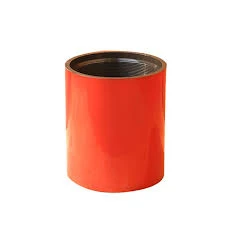- Afrikaans
- Albanian
- Amharic
- Arabic
- Armenian
- Azerbaijani
- Basque
- Belarusian
- Bengali
- Bosnian
- Bulgarian
- Catalan
- Cebuano
- Corsican
- Croatian
- Czech
- Danish
- Dutch
- English
- Esperanto
- Estonian
- Finnish
- French
- Frisian
- Galician
- Georgian
- German
- Greek
- Gujarati
- Haitian Creole
- hausa
- hawaiian
- Hebrew
- Hindi
- Miao
- Hungarian
- Icelandic
- igbo
- Indonesian
- irish
- Italian
- Japanese
- Javanese
- Kannada
- kazakh
- Khmer
- Rwandese
- Korean
- Kurdish
- Kyrgyz
- Lao
- Latin
- Latvian
- Lithuanian
- Luxembourgish
- Macedonian
- Malgashi
- Malay
- Malayalam
- Maltese
- Maori
- Marathi
- Mongolian
- Myanmar
- Nepali
- Norwegian
- Norwegian
- Occitan
- Pashto
- Persian
- Polish
- Portuguese
- Punjabi
- Romanian
- Russian
- Samoan
- Scottish Gaelic
- Serbian
- Sesotho
- Shona
- Sindhi
- Sinhala
- Slovak
- Slovenian
- Somali
- Spanish
- Sundanese
- Swahili
- Swedish
- Tagalog
- Tajik
- Tamil
- Tatar
- Telugu
- Thai
- Turkish
- Turkmen
- Ukrainian
- Urdu
- Uighur
- Uzbek
- Vietnamese
- Welsh
- Bantu
- Yiddish
- Yoruba
- Zulu
api tubing and casing chart
Understanding the API Tubing and Casing Chart A Key Component in Oil and Gas Drilling
In the oil and gas industry, the efficient extraction of hydrocarbon resources hinges on various factors, including the design and implementation of wellbore integrity. This is where the API (American Petroleum Institute) tubing and casing chart comes into play. This chart is crucial for professionals in the field, as it helps them choose the appropriate sizes and specifications for tubing and casing pipes used in drilling operations.
What are Tubing and Casing?
To appreciate the significance of the API tubing and casing chart, it is essential to understand the roles of tubing and casing. Casing is a series of pipes used to line the walls of the wellbore, providing structural integrity and sealing off permeable formations to prevent fluid migration. Tubing, on the other hand, is the pipe through which oil or gas flows from the reservoir to the surface after extraction. The choices made regarding tubing and casing can have substantial effects on the efficiency and safety of the drilling process.
The API Tubing and Casing Chart Explained
The API tubing and casing chart presents a comprehensive guide, detailing the dimensions, specifications, and physical properties of various tubing and casing sizes. The chart typically includes information such as the outer diameter, inner diameter, weight, and the burst and collapse pressure ratings of different grades and sizes of tubing and casing. These parameters are essential for ensuring that the chosen materials can withstand the extreme conditions encountered during drilling, such as high pressure, temperature fluctuations, and the corrosive nature of the extracted fluids.
api tubing and casing chart

The chart categorizes tubing and casing into various grades based on their yield strength, which is the maximum amount of stress a material can withstand without permanent deformation. For example, common casing grades include K55, J55, and N80, while tubing grades can include L80 and P110. The selection of the appropriate grade depends on the specifics of the drilling operation, including the depth of the well and the types of formations encountered.
Importance of Proper Selection
Selecting the correct size and grade of tubing and casing based on the API chart is vital for several reasons. First and foremost, this selection impacts the safety of drilling operations. A pipe that is not adequately rated for the expected pressures may fail, leading to potentially catastrophic blowouts and spills.
Additionally, using the right tubing and casing materials can enhance efficiency in production. For example, using high-grade materials can prolong the lifespan of the well infrastructure, reducing the need for costly repairs and interventions. It can also improve the flow rates of hydrocarbons, ultimately affecting the economic viability of the well.
Conclusion
In conclusion, the API tubing and casing chart is an indispensable tool in the oil and gas industry. It provides vital information required for the design and construction of wells, ensuring both safety and efficiency during drilling operations. As the industry continues to evolve with technological advancements and an ever-increasing focus on sustainability, understanding and utilizing this chart will remain crucial for engineers and drilling professionals. The complexity of these choices underscores the importance of education and experience in making informed decisions that align with industry standards and best practices.
-
Tubing Pup Joints: Essential Components for Oil and Gas OperationsNewsJul.10,2025
-
Pup Joints: Essential Components for Reliable Drilling OperationsNewsJul.10,2025
-
Pipe Couplings: Connecting Your World EfficientlyNewsJul.10,2025
-
Mastering Oilfield Operations with Quality Tubing and CasingNewsJul.10,2025
-
High-Quality Casing Couplings for Every NeedNewsJul.10,2025
-
Boost Your Drilling Efficiency with Premium Crossover Tools & Seating NipplesNewsJul.10,2025







